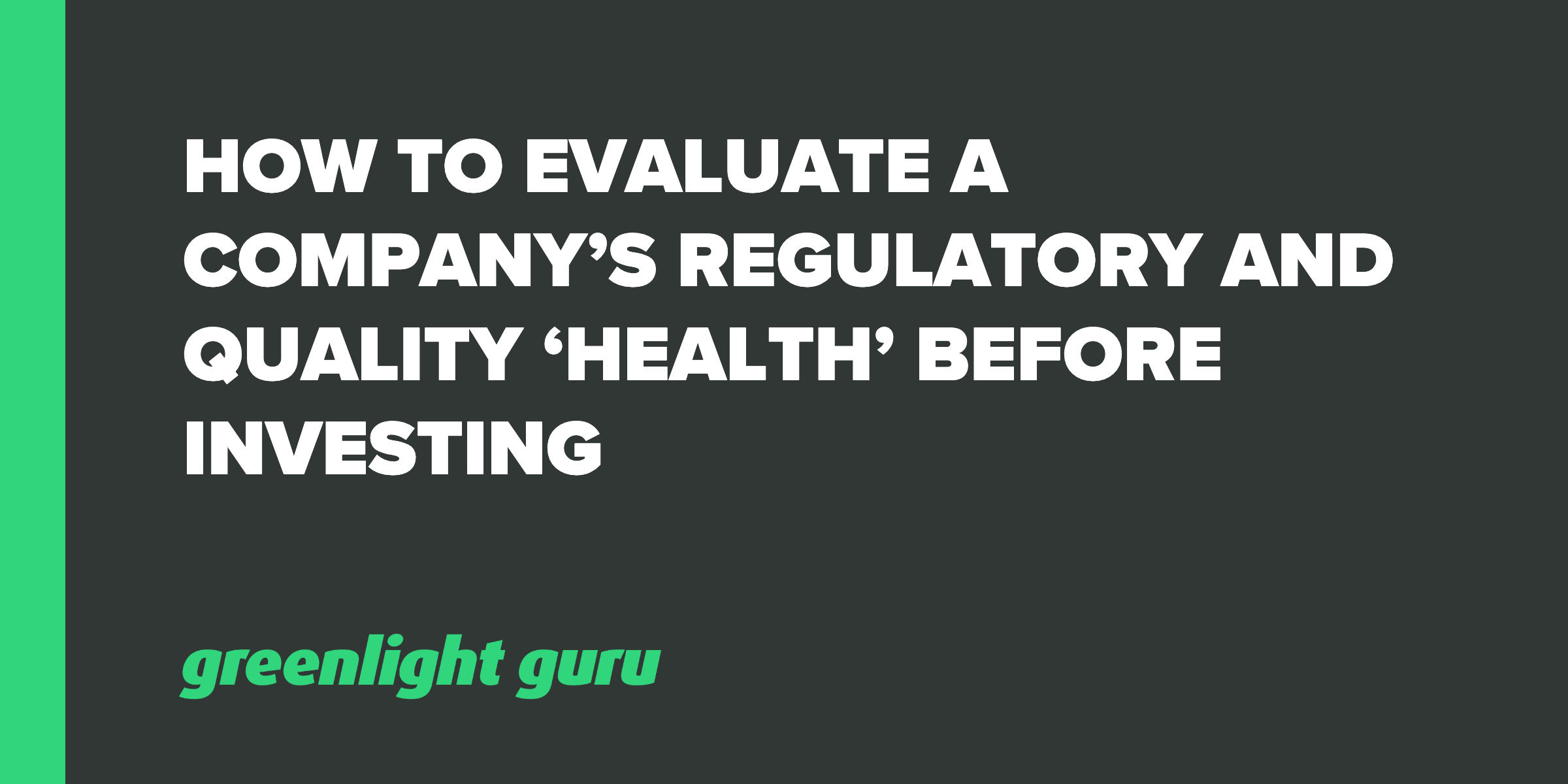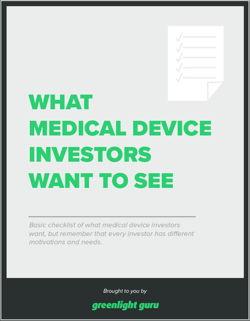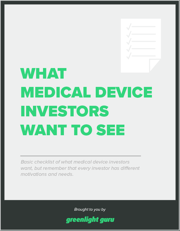How to Evaluate a Company’s Regulatory and Quality ‘Health’ Before Investing

When asked whether he hires consultants to help him make investment decisions in the MedTech space, an angel investor friend of mine once told me, “spending $5,000–$10,000 on somebody to give me a thumbs up for a $50,000 financial commitment seems like a waste of money.”
He elaborated, “If I have to spend 10–20% of the prospective investment on finding out if I should make that investment, I’m not moving forward.” Within a seed round, angels and early-stage investors will often evaluate companies based on their own experiences and expertise while leveraging internal networks to help guide them as needed. In this context, my friend’s advice makes sense.
However, what happens when the stakes are quite a bit higher?
In both the MedTech and BioTech spaces, organic expansion is dwindling, and acquisition is the preferred growth mechanism. More and more large organizations are scooping up nascent companies in order to expand existing portfolios or enter new markets. Most of these buys are happening when a start-up is no longer a start-up but a viable, post-revenue generating company with meaningful valuation and actual, realized value.
This type of opportunity makes investors—private, VCs and corporate strategics alike—salivate and eager to get their hands on these “shiny, new toys.” For the most part, these acquisitions are preceded by deep due diligence that involves vetting the founders and the team, product, market, advisors, and strategic decisions as well as a thorough review of the financials. As some investors say, “We see them in their underwear.”
However, the due diligence often fails to adequately assess a company’s regulatory and quality “health”, which leads to more painful and expensive navigation of FDA and EU submissions downstream. This failure, along with inadequate quality management system readiness, sometimes leads to a company requiring more capital than previously anticipated or worse, results in expensive regulatory actions.
Here are some tips to ensure that an investment in a company isn’t derailed by regulatory or quality unpreparedness:
#1: Obtain multiple opinions and position statements on the company’s regulatory strategy
Having a robust network of regulatory consultants in your Rolodex is critical, but make sure to leverage several of them when determining the soundness of a company’s regulatory approach.
There is an example I recall when a venture group called me after a product’s 510(k) was refused for several reasons. I immediately recognized the product as having an FDA Guidance for Manufacturers that allowed the company to submit a limited set of testing data as long as it complied with the guidance. This ultimately could have saved the company—and investors—hundreds of thousands of dollars. This occurred because they only considered one third-party opinion, and this “expert” did not confirm the existence of a guidance document.
Multiple opinions may cost a bit more in the short term but the outcome of bad advice can be costly in the long run. Hedge your bets— consult with trusted partners that have proven industry knowledge and experience to help guide you through these business decisions.
#2: If a company already has a product on the market, conduct a quality management system gap analysis prior to acquisition
This is probably one of the biggest financial obstacles that investors fail to predict in advance—and frankly, one that they aren’t even aware of in the first place!
Getting a product to market, although a significant step and financial hurdle, is not the complete regulatory story. Once on the market in the United States, for example, a company must follow what the FDA calls “General Controls”, which includes a quality management system per FDA 21 CFR Part 820 and ISO 13485:2016.
Implementation of a full QMS capable of withstanding FDA inspections and Notified Body audits can be expensive. On average, implementation costs of a robust QMS can range from $20,000 (simple device, low risk) to $100,000+ (complex device, high risk). I can’t count on two hands the number of investors who have asked me, “What the heck is a quality management system?”
Know about a QMS and anticipate future financial commitment to ensuring the company has a robust QMS in place.
#3: Evaluate quality and regulatory resources at the target company
Pop quiz: Who is the most important person in an early-stage company?
A) CEO
B) CEO
C) CEO
The answer is: None of these. Yes, the C-level team is critical for fundraising, operations, and all other elements that are critical for emerging companies. But folks like the VP of Regulatory and VP of Quality are just, if not more, important than them! They are key personnel that can dictate a product’s approval status, continued on-market status and maintain knowledge of the regulatory climate associated with the company’s product lines.
I served as a de-facto VP a few years back at a cardiac company where the previous VP of Regulatory failed to perform simple tasks like site registration and implement a QMS; this company was issued a warning letter by the FDA and had to cease operations for a few months while they responded to the deficiencies.
Grill the quality and/or regulatory representatives in your prospective investment newco to determine readiness for handling future needs.
#4: Research the regulatory landscape of predicate and competitor products of the company
The regulatory climate, especially in the United States, shifts frequently. A medical device or drug with a track record of minimal field actions or reportable events (deaths, serious injury, etc.) can fall under further scrutiny after a serious post-market event, and overnight! When they were first developed, breast implants were not even on the FDA’s radar; they became a huge hot topic after a rash of adverse events.
Before you sink your dollars into a company, research the entire regulatory landscape that includes more than just the regulatory strategy. Research competitor products, Medical Device Reports, guidance documents, issued warning letters and other post-market information.
Final Thoughts
Regulatory and quality obstacles can present huge hurdles for MedTech companies seeking to go to or remain in the market.
Investors can reap significant rewards by investing in the right companies, but distinguishing the right company from a "lost cause" involves a lot more due diligence on the regulatory front than most groups are performing. Invest in trusted partners and proven solutions on the front-end to save yourself from the trouble on the back end.
The original post was published on MedTech Intelligence and is being republished here with permission.
Looking for an all-in-one QMS solution to advance the success of your in-market devices and integrate your company's quality processes with product development efforts? Click here to take a quick tour of Greenlight Guru's Medical Device QMS software →
David Amor, MSBE, CQA is a medtech/biotech consultant and mobile health entrepreneur who founded Medgineering, a company focused on remote compliance, regulatory, and quality systems consulting for larger companies and start-ups. A graduate of the prestigious Innovation Fellows program at the University of Minnesota’s...
Related Posts
5 Habits of Highly Effective MedTech Companies
How 4 Pre-Market MedTech Companies are Leveraging Greenlight Guru Quality
What Medtech Startups Should Know About Quality Systems To Not Go Overboard
Get your free checklist
What Medical Device Investors Want to See











